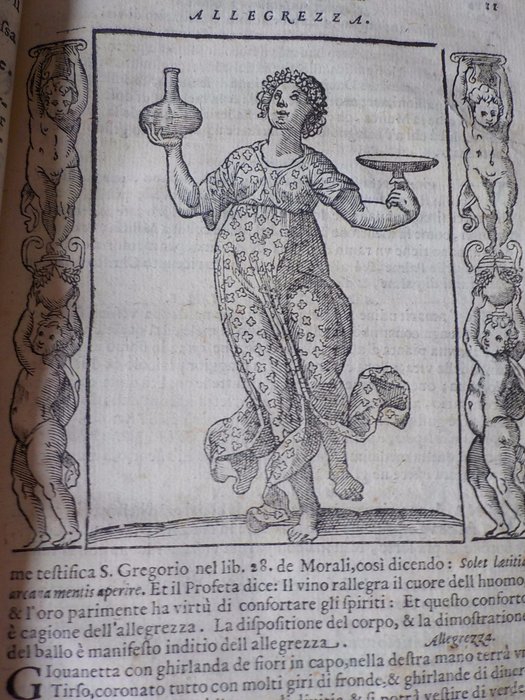
Vignola - Regola delli cinque Ordini d'Architettura - 1773
Nr. 12336709

Nr. 12336709

Scholar and writer Cesare Ripa (Perugia 1560-1645 ); He spent most of his life in Rome at the service of Cardinal Salviati first and then of the Montelparo family.
In 1593 he published in Rome the first edition (without illustrations) of Iconologia; the work, whose great success is evidenced by the numerous subsequent editions and translations, (from 1603 accompanied by illustrations) had a wide influence on visual arts at least until the 18th century.
The Iconologia was a highly influential emblem book based on Egyptian, Greek and Roman emblematical representations. The book was used by orators, artists, poets and "modern Italians" to give substance to qualities such as virtues, vices, passions, arts and sciences. The concepts were arranged in alphabetical order, after the fashion of the Renaissance. For each there was a verbal description of the allegorical figure proposed by Ripa to embody the concept, giving the type and color of its clothing and its varied symbolic paraphernalias, along with the reasons why these were chosen, reasons often supported by references to literature (largely classical)
A second edition was published in Rome in 1603 this time with 684 concepts and 151 woodcuts, dedicated to Lorenzo Salviati. The book was extremely influential in the 17th and 18th centuries and was quoted extensively in various art forms.[3] In particular, it influenced the painter Pietro da Cortona and his followers. Also Dutch painters like Gerard de Lairesse, Willem van Mieris based work on Ripa's emblems. Vermeer used the emblem for the muse Clio for his The Art of Painting, and several others in his The Allegory of Faith.
Total of 523 pages with dedication to Lorenzo Salviati. Preface. Tables of illustrations. Text. Imprimatur after p. 523 and Errata
Zo koop je op Catawiki
1. Ontdek iets bijzonders
2. Plaats het hoogste bod
3. Veilig betalen